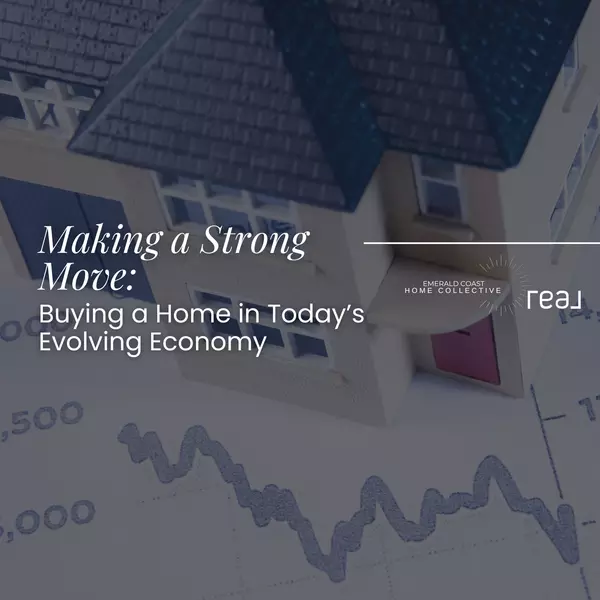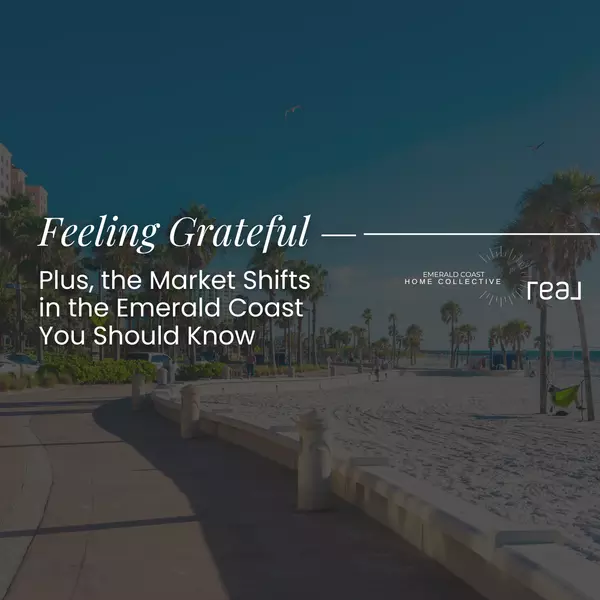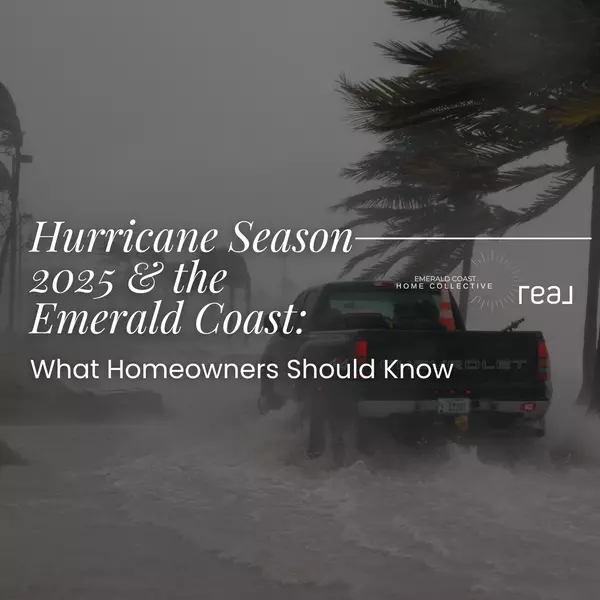Florida Panhandle Mid-year Report: Stats, Shifts and Forecasts

Emerging Trends and Challenges in the Florida Panhandle Housing Market
🌱 1. From Boom to Balance: Rising Inventory & Buyer Power
Surplus supply: Like much of the Sun Belt, the Panhandle now faces a surge in listings—driven by a pandemic-era construction boom—outpacing buyer demand. This is fueling slower sales, more price cuts, and negotiable concessions
Shifting to buyer’s market: Across Florida, sellers are adjusting and buyers are gaining leverage, signaling a more balanced market compared to previous tight conditions.
2. Rent & Residential Balance: Cooling Construction
Multifamily shift: After a record 2023 with ~4,180 units under construction, permit activity dropped sharply—75% fewer starts in 2024, with ~2,096 completions forecasted in 2025 .
Rental market trends: Despite strong absorption in 2024 (2,644 net units YTD), rising vacancy (–10 bps occupancy) led to minimal rent growth (~0.6%). With less new supply expected, rents may rebound closer to +1.5% by late 2025.
3. Climate Risk & Insurance Costs
Hurricane‒driven disruption: Frequent storms in the Panhandle intensify rebuild cycles. While storm-hit homes can fetch higher prices, repair challenges disrupt supply and affordability.
Insurance crisis: Florida homeowners pay astronomical premiums—averaging $4,200 to $6,000 annually—driven by rising storm frequency, reinsurance costs, and retreat by major insurers.
Economic affordability drain: These added housing costs—insurance, taxes, HOA—are squeezing both buyers and renters, especially middle-income households.
👨👩👧👦4. Demographics & Housing Demand
Population surge: Panhandle communities (e.g., Tallahassee, Pensacola) saw 10–12% population growth over the past decade, with in-migration renewed even after hurricanes.
Diverse housing needs: Millennial and remote-work trends favor modern, amenity-rich homes. Meanwhile, boomers drive demand for downsizing and senior housing—evidenced by new affordable senior communities in Fort Walton Beach and Crestview.
🏗️ 5. Affordability & Regulatory Dynamics
Affordability crunch: With mortgage rates around 6–7%, together with surging insurance and HOA fees, housing affordability is the Panhandle’s central challenge.
New safety/build regs: Statewide increases in condo safety standards (post-Surfside) are increasing costs for developers and buyers.
📌 Outlook: Markets to Watch, Issues to Watch
Opportunity
✓ Slowing multifamily supply could rebalance rents by 2026.
✓ Buyers may benefit from price corrections and concessions.
✓ Senior & affordable housing investments show promise.
Challenge
✓ Insurance and climate risk remain structural headwinds to affordability.
✓ Rising HOA and compliance costs could dampen condo investment.
✓ Overdevelopment risks could lead to vacancy pressure if migration stalls.
🎯 Strategic Takeaways
For Buyers: With greater negotiation power now, explore off-market, storm-survivor listings—but prepare for higher insurance costs.
For Renters: Steady rent growth is expected; stabilizing demand suggests modest, sustainable increases.
For Developers: Focus on mixed-income and resilient housing. Leverage senior/affordable segments, where demand is strong.
For Policymakers: Support efforts on insurance reform, climate-resilient construction, and affordable housing incentives to sustain market health.
📣 Heather's Final Word
The Florida Panhandle is transforming—from rapid growth to market recalibration. Mounting inventory challenges, insurance burdens, and climate risks are testing long-held appeal. Yet, population momentum, diversified demographic needs, and a slowing supply pipeline offer a path toward renewed balance and sustainable growth. Navigating this evolving environment requires smart, climate-aware development, careful homebuyer positioning, and proactive policy action to preserve the region's potential.
🌱 1. From Boom to Balance: Rising Inventory & Buyer Power
Surplus supply: Like much of the Sun Belt, the Panhandle now faces a surge in listings—driven by a pandemic-era construction boom—outpacing buyer demand. This is fueling slower sales, more price cuts, and negotiable concessions
Shifting to buyer’s market: Across Florida, sellers are adjusting and buyers are gaining leverage, signaling a more balanced market compared to previous tight conditions.
2. Rent & Residential Balance: Cooling Construction
Multifamily shift: After a record 2023 with ~4,180 units under construction, permit activity dropped sharply—75% fewer starts in 2024, with ~2,096 completions forecasted in 2025 .
Rental market trends: Despite strong absorption in 2024 (2,644 net units YTD), rising vacancy (–10 bps occupancy) led to minimal rent growth (~0.6%). With less new supply expected, rents may rebound closer to +1.5% by late 2025.
3. Climate Risk & Insurance Costs
Hurricane‒driven disruption: Frequent storms in the Panhandle intensify rebuild cycles. While storm-hit homes can fetch higher prices, repair challenges disrupt supply and affordability.
Insurance crisis: Florida homeowners pay astronomical premiums—averaging $4,200 to $6,000 annually—driven by rising storm frequency, reinsurance costs, and retreat by major insurers.
Economic affordability drain: These added housing costs—insurance, taxes, HOA—are squeezing both buyers and renters, especially middle-income households.
👨👩👧👦4. Demographics & Housing Demand
Population surge: Panhandle communities (e.g., Tallahassee, Pensacola) saw 10–12% population growth over the past decade, with in-migration renewed even after hurricanes.
Diverse housing needs: Millennial and remote-work trends favor modern, amenity-rich homes. Meanwhile, boomers drive demand for downsizing and senior housing—evidenced by new affordable senior communities in Fort Walton Beach and Crestview.
🏗️ 5. Affordability & Regulatory Dynamics
Affordability crunch: With mortgage rates around 6–7%, together with surging insurance and HOA fees, housing affordability is the Panhandle’s central challenge.
New safety/build regs: Statewide increases in condo safety standards (post-Surfside) are increasing costs for developers and buyers.
📌 Outlook: Markets to Watch, Issues to Watch
Opportunity
✓ Slowing multifamily supply could rebalance rents by 2026.
✓ Buyers may benefit from price corrections and concessions.
✓ Senior & affordable housing investments show promise.
Challenge
✓ Insurance and climate risk remain structural headwinds to affordability.
✓ Rising HOA and compliance costs could dampen condo investment.
✓ Overdevelopment risks could lead to vacancy pressure if migration stalls.
🎯 Strategic Takeaways
For Buyers: With greater negotiation power now, explore off-market, storm-survivor listings—but prepare for higher insurance costs.
For Renters: Steady rent growth is expected; stabilizing demand suggests modest, sustainable increases.
For Developers: Focus on mixed-income and resilient housing. Leverage senior/affordable segments, where demand is strong.
For Policymakers: Support efforts on insurance reform, climate-resilient construction, and affordable housing incentives to sustain market health.
📣 Heather's Final Word
The Florida Panhandle is transforming—from rapid growth to market recalibration. Mounting inventory challenges, insurance burdens, and climate risks are testing long-held appeal. Yet, population momentum, diversified demographic needs, and a slowing supply pipeline offer a path toward renewed balance and sustainable growth. Navigating this evolving environment requires smart, climate-aware development, careful homebuyer positioning, and proactive policy action to preserve the region's potential.
Categories
- All Blogs (138)
- Eat (21)
- Emerald Coast Updates (25)
- Holiday Ideas (17)
- Home Buying Guide (53)
- Home Owner Tips (44)
- Homes For Sale Along The Emerald Coast (26)
- Investing Tips (35)
- Living in 30A (49)
- Market Update (32)
- Play (38)
- Relocation Guide (44)
- Schools in the Emerald Coast (2)
- Stay (29)
- Weekend Guide (8)
Recent Posts

Christmas Favorites, Heather-Approved

Emerald Coast Buying Advantage in Today’s Evolving Economy

Timing Your Sale: Is January Actually The Best Month?

Gratitude + Market Shifts in the Emerald Coast You Should Know

Real Estate Term of the Month: What a ''Buy-Down''?

Prep Your Home for a Holiday Sale — The Easy Way!

Lead Poisoning on the Emerald Coast: What Every Home Seller and Buyer Should Know

Heather's Hot Take: Real Estate Rant of the Month

October is Breast Cancer Awareness Month: A Time to Honor, Educate & Take Action

Are You Storm-Ready? Key Insurance & Flood Zone Updates
GET MORE INFORMATION


